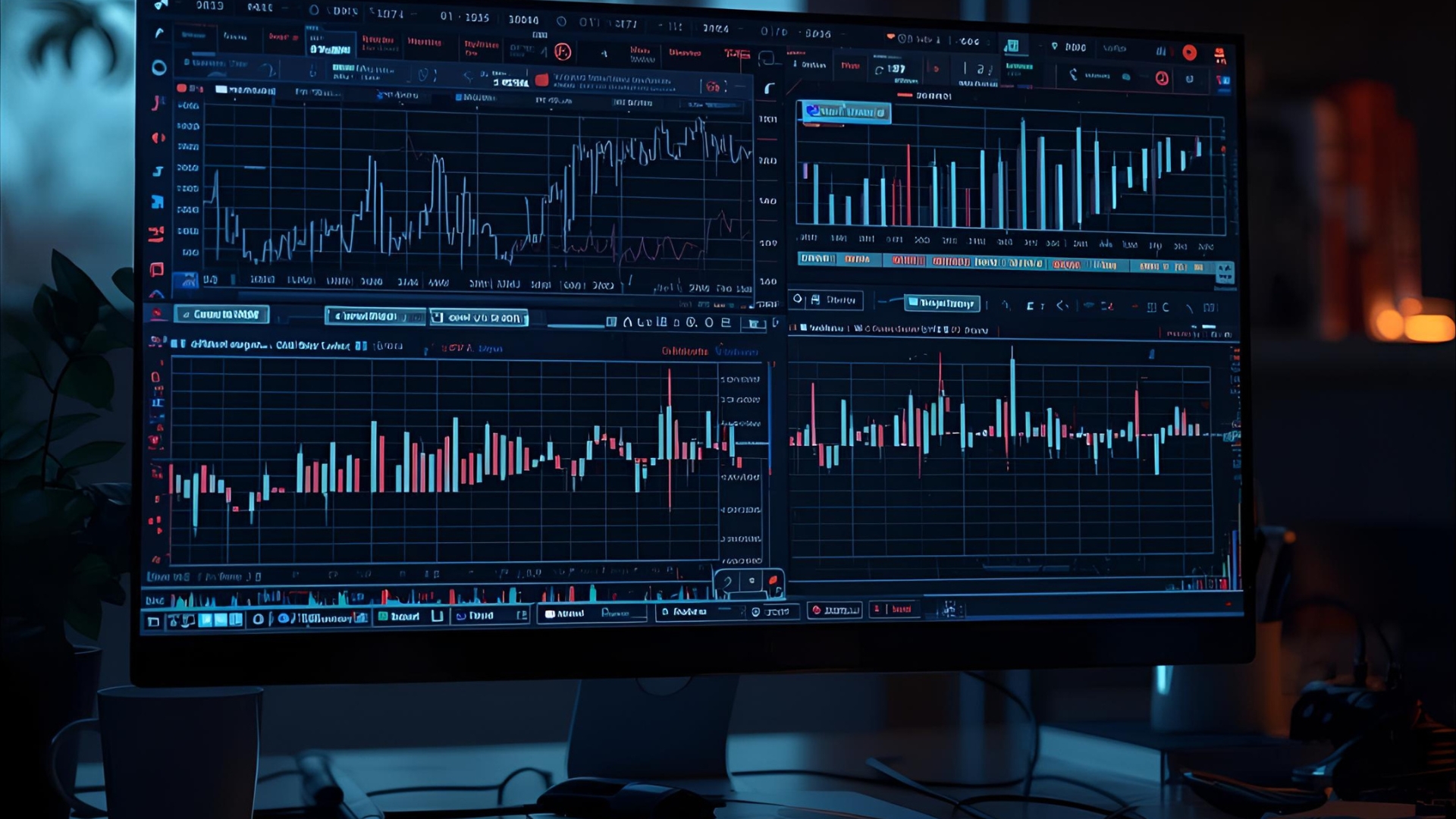Hedera price cools after overbought spike 02 Oct

The Hedera price surged into late September on expanding volume before momentum indicators flashed classic overbought warnings. As October begins, HBAR is attempting to “vent off” that saturation through time (sideways consolidation) and, at times, through shallow pullbacks. The market’s task over the next few sessions is to determine whether this cooling phase is merely a pause within a larger uptrend or the opening stretch of a deeper mean-reversion.
At the time of writing on October 2, 2025, reference dashboards show HBAR trading in the low-to-mid $0.20s with healthy liquidity and an elevated weekly turnover versus early September. Real-time trackers such as CoinMarketCap place Hedera among the top-20 digital assets by market capitalisation, with circulating supply above 42 billion HBAR and daily volumes in the hundreds of millions of dollars.
From a narrative point of view, the Hedera price benefited in Q3 from headlines around growing tokenisation pilots and institutional activity on the network—factors that supported risk appetite and helped bulls press resistance into quarter-end. Recent coverage from CoinDesk, for example, highlighted late-September follow-through on rising volume as HBAR tested a nearby resistance shelf just above $0.21–$0.22.
In this analysis, we unpack the current cooling phase using classical technicals—RSI, trend structure, and support/resistance—tie those readings to on-chain and enterprise adoption storylines, and map plausible paths for Hedera price action through October.
The state of play: price, liquidity, and momentum
HBAR’s late-September push drew attention because it coincided with broad-market hesitations elsewhere, implying idiosyncratic strength. As of this week, market trackers show:
-
A live Hedera price in the ~$0.22 area, updated in real time alongside a market cap near $9.5B–$10B depending on intraday moves and the circulating float used.
-
News-flow noting HBAR’s challenge of short-term resistance into the $0.215–$0.22 band, with volumes trending above prior weeks.
Momentum, though, has cooled. The Relative Strength Index (RSI)—a 0-to-100 oscillator developed by J. Welles Wilder—commonly defines overbought when readings move above 70 and oversold below 30. In uptrends, RSI can remain elevated for stretches; pullbacks often begin when it rolls over from those extreme zones. Traders use it best in context with trend, moving averages, and price structure.
Although intraday RSI values vary by exchange and timeframe, Hedera’s late-September rally likely pushed short-term RSI readings into or near overbought zones on popular chart intervals before rolling down to neutral as October opened. TradingView’s technical summary for HBAR—an aggregate of oscillators and moving averages—has recently oscillated between “buy” and “neutral,” echoing that shift from thrust to digestion.
Why “venting off” overbought matters

The mechanics of saturation relief
When the Hedera price overheats, the market typically resolves the tension in one of two ways. First, time correction: price goes sideways in a tight range, allowing momentum to reset without a material drawdown. Second, price correction: a controlled pullback to logical support where dip buyers reassess risk/reward.
RSI teaches a simple truth: an asset can remain “overbought” in strong uptrends, and overbought is not a sell signal by itself. But as momentum cools, the probability of mean-reversion increases—especially near well-travelled resistance. Context from late September is important: coverage observed HBAR pressing resistance with surging volume, which often leaves residual stop clusters both above and below recent highs. Those stops can fuel quick shakes as the market hunts liquidity.
Key levels that define the battleground
Public analyses and screeners over the last week have repeatedly flagged the $0.215–$0.22 band as near-term resistance and the $0.20–$0.21 region as first support. CoinDesk’s commentary aligned with that picture, while other outlets conjectured targets above $0.25 if bulls reclaim momentum. It’s wise to treat third-party “targets” cautiously, but they help frame scenario planning.
Macro narrative: adoption tailwinds and enterprise tokenisation
The enterprise angle that underpins HBAR’s bid
Beyond candles and oscillators, the Hedera price story in 2025 rests heavily on enterprise experimentation with tokenisation. Over the spring and summer, Hedera-adjacent headlines tracked partnerships around real-world asset (RWA) tokenisation and pilot programs with regulated infrastructure providers. For instance, Invezz reported on Tokeny expanding RWA adoption on Hedera with backing from the HBAR Foundation, pointing to a more enterprise-grade issuance stack.
Community and industry sites have also summarised mid-2025 milestones such as pilots and integrations across custodians, capital-markets firms, and banking partners—data points that, while not price determinants on their own, bolster the fundamental narrative when technicals are supportive.
Why real-world assets matter for valuation regimes
Tokenisation is not just a buzzword; it’s a thesis for network cash flows via transaction fees and service revenues, even if the path is uneven. In a market that often reprices on future optionality, signs of regulated-market participation can compress risk premia temporarily, enabling upside skew during momentum phases. That interplay between narrative and tape is central to understanding why the Hedera price advanced into quarter-end despite mixed macro sentiment.
Technical anatomy: trend, momentum, market structure
Trend structure into October
On higher-timeframe charts, HBAR staged a sequence of higher lows from early Q3 into late September, a constructive development after the mid-year chop. The Hedera price now faces the textbook decision point common to assets exiting overbought stretches:
-
Does price hold above the rising short-term moving averages after an RSI cool-down?
-
Do dip buyers defend the first demand shelf between $0.20 and $0.21?
-
Is there follow-through above $0.22–$0.23 to negate the risk of a deeper swing-high failure?
TradingView’s technical page doesn’t prescribe a single verdict but aggregates indicators that traders can drill into—RSI, MACD, moving averages, and pivots—allowing a plural-indicator sanity check before committing capital.
Momentum posture: RSI dynamics in focus
RSI’s value lies in regime identification. In a bullish regime, pullbacks often stop with RSI holding above 40–45 on daily frames, then pivot higher as buyers rotate in. In bearish regimes, bounces fade near RSI 55–60. As we move through early October, watch whether HBAR’s daily RSI stabilises in the higher band (bullish) or compresses under neutral. The definition of RSI and its interpretation parameters are time-tested, but should always be combined with trend and volume context, especially in crypto, where momentum can persist or exhaust abruptly.
The near-term tape: what late-September told us
CoinDesk flagged a 2.37% daily gain on September 29 with “surging volumes” while HBAR tested resistance near $0.217—a move that captured the finishing sprint into Q3’s close. That sprint, by definition, risked an overbought print on faster oscillators. As October began, multiple commentaries suggested fading momentum and the possibility of a retest toward three-month lows if sellers pressed their advantage; others spotlighted the opposite risk: a short-squeeze scenario if price breaks above near-term highs, placing approximately $32 million in short positions at risk of liquidation. The coexistence of these narratives is typical at inflection levels and andemphasisess risk management.
Fundamental currents: supply, liquidity, and network position
CoinMarketCap’s profile reminds us that Hedera’s supply dynamics—circulating supply north of 42B HBAR against a max supply of 50B—create a particular elasticity to inflows. Large floats can dampen upside velocity in the absence of structural demand, but they also provide tight spreads and deep liquidity when institutions engage. The presence of enterprise pilots and council-member sponsorship can tilt that balance in windows where news and tape rhyme.
Meanwhile, news around tokenization—ranging from UK collateralization trials to wholesale CBDC pilots—illustrates how Hedera’s go-to-market differs from purely retail-driven networks. That positioning can result in step-wise adoption: long stretches of groundwork punctuated by deal-driven spurts in activity and sentiment.
Scenario analysis for October 2025

Bullish continuation: reclaim and extend
In the constructive path, Hedera price stabilises above $0.20–$0.21, with RSI basing in the 45–55 zone before curling higher. A decisive daily close over $0.22–$0.23 would turn resistance into support and invite trend-followers to press for a measured move into the mid-$0.20s. Short-term breakout talk from market commentators referenced higher numbers if momentum broadens, but sustainable progress likely requires confirmation via volume and higher lows on intraday pullbacks rather than a single spike.
Range and time correction: digestion above the first support
If bulls cannot clear $0.22–$0.23 immediately, a range-bound week between roughly $0.205–$0.225 would still achieve the core objective: venting off overbought saturation. In time corrections, volatility compresses, option premiums decay, and the next directional burst becomes more informed by incremental catalysts—network partnerships, macro data, or cross-market cues.
Bearish fade: losing first support and revisiting summer prices
Should sellers force a daily close under $0.20, the market opens a path toward the upper-$0.18s–$0.19s where prior liquidity pockets formed during late-summer chop. That would likely coincide with RSI slipping under neutral and the TradingView oscillator pack tilting toward sell/neutral. Traders would then watch for bullish divergences or swing-failure patterns (SFPs) near those lows for evidence that the downside is exhausting.
Catalysts and risk factors to watch
Adoption and enterprise headlines
Coverage through mid-2025 emphasised tokenisation milestones and institutional pilots—developments that can spark attention even if on-chain volumes lag the press cycle. Follow-through in Q4, particularly from regulated platforms expanding Hedera integrations, would strengthen the “enterprise chain” narrative that supported late-September flows.
Market-structure shocks: liquidations and flows
Derivatives posture matters around inflection points. Reports today referenced a setup where a topside break could imperil tens of millions of dollars in shorts, which in crypto can create feedback loops as liquidations force market buys. Conversely, clean failures at resistance can unwind levered longs just as fast, producing air-pockets to first support. Traders should contextualise such headlines within order-book data and not treat any single metric as destiny.
Macro currents and correlations
While Hedera price has idiosyncratic drivers, crypto beta still correlates with liquidity conditions and risk sentiment. A hawkish macro headline, a sudden shift in dollar liquidity, or cross-asset volatility spikes can overwhelm local technicals. That’s why scenario planning matters more than point predictions, and why risk controls must anchor any trading plan.
Strategy notes: translating charts into decisions
For momentum-oriented traders
If you trade breakouts, your playbook typically seeks acceptance above resistance, not just a wick. On HBAR, that means waiting for a daily close and constructive retest over $0.22–$0.23, then using intraday pullbacks for entries. As RSI normalises and re-accelerates, you want to see higher lows on 4-hour frames and expanding volume on pushes. TradingView’s combined indicator view can help confirm alignment between oscillators and trend tools before you press.
For mean-reversion and swing setups
If your edge centres on buying weakness, the first probe often sits near $0.20–$0.21 with a well-defined invalidation just below the shelf. There, you’re betting the Hedera price is “correcting in time” rather than “correcting in price.” Should that shelf break, the roadmap shifts to the $0.19s where summer liquidity lives. Mean-reversion traders watch RSI for bullish divergence—price making equal/lower lows while RSI makes higher lows—before acting.
For longer-term allocators
If you’re positioning around tokenisation and enterprise adoption, your concern is path-dependency: absorbing volatility while the thesis plays out. In that mode, macro cycles and network milestones tower over day-to-day prints. You still care about Hedera price maps to optimise entries, but you avoid leverage and let validated fundamentals—such as real RWA issuance, regulated-market integrations, and council-member production deployments—drive conviction. Reports through 2025 have highlighted movement on this front; continued validation is the key.
Putting it together: a balanced take
The Hedera price narrative into October blends familiar crypto dynamics with differentiated enterprise traction:
-
Tape: HBAR pressed into resistance with rising volume at September’s close, then cooled as October opened—exactly the rhythm you’d expect after an overbought push.
-
Momentum: RSI and mixed technical summaries argue for patience: let the market finish venting before you bet on continuation or reversal.
-
Storyline: Tokenisation and institutional pilots continue to underpin medium-term interest, but headlines must translate into persistent demand for the bid to broaden.
In short, HBAR is doing what strong markets do after a sprint: catching its breath. Whether that breath becomes a springboard or a stumble depends on how price behaves around $0.20–$0.23 and how quickly new catalysts arrive to re-ignite momentum.
Also Read: Hedera price today HBAR to USD live
Conclusion
As of October 2, 2025, the Hedera price is in the process of venting off overbought saturation. After testing resistance near the low-$0.22s on elevated volume, momentum cooled, and indicators like RSI drifted toward neutral on popular timeframes. In the short run, the market will try to decide between three straightforward paths: reclaim and extend above $0.22–$0.23, digest in a tight band to reset oscillators, or undercut $0.20 to test deeper support pockets established over the summer.
Traders can respect that uncertainty by aligning entries with structure—waiting for acceptance above resistance for momentum plays or leaning against well-defined shelves for mean-reversion—with an eye on enterprise catalysts that have powered HBAR’s 2025 narrative. Regardless of approach, combine indicator signals with price action, respect invalidation levels, and remember that overbought is a condition, not a command.
FAQs
Q: What does “overbought saturation” mean for the Hedera price?
“Overbought” refers to momentum readings—commonly RSI above 70—that signal the market may have advanced too quickly relative to its recent baseline. For Hedera price, saturation often resolves via sideways consolidation or a mild pullback that lets momentum cool without necessarily breaking the uptrend. RSI is best used with trend and volume context rather than in isolation.
Q: What are the key levels to watch in early October 2025?
Recent coverage placed resistance in the $0.215–$0.23 zone and highlighted $0.20–$0.21 as first support, with summer liquidity pockets deeper in the high-$0.18s to low-$0.19s. A daily close back above resistance would favour continuation; a firm loss of $0.20 would raise the odds of a fuller mean-reversion.
Q: How do institutional tokenisation efforts affect HBAR?
Enterprise pilots and integrations—such as those involving Tokeny or summarised by industry trackers—can expand real-world asset issuance and throughput on Hedera. While not a guarantee of price appreciation, such activity can improve the network’s perceived utility and narrative strength, supporting bids when technicals align.
Q: Is there evidence of positioning that could accelerate moves?
Yes. Reports today mentioned a setup where a topside break could threaten roughly $32 in shorts, which, if triggered, can create forced buying and sharp upside wicks. Conversely, failures at resistance can unwind longs just as quickly. Treat liquidation estimates as one input among many.
Q: Where can I check Hedera’s live price and technical summaries?
For live Hedera price, market cap, and circulating supply, you can consult CoinMarketCap’s HBAR page. For a dashboard of oscillators, moving averages, and a technical summary, TradingView’s HBAR/USD screen is widely used. Both update continuously and provide a good baseline for day-to-day monitoring.




